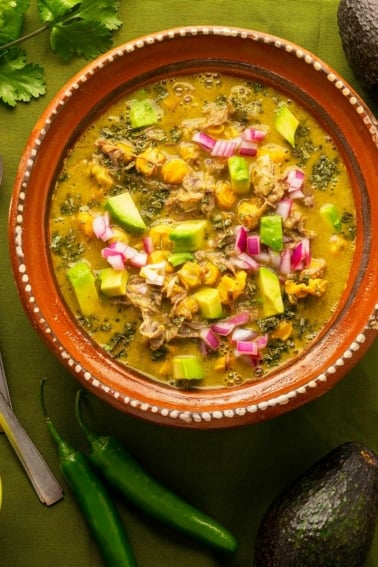As an Amazon Associate I earn from qualifying purchases.

Carne seca, machaca, cecina, tasajo… all these names for Mexican dried meat had me all balled up, confused. I did a lot of reading and a fair amount of asking in both English and my broken Spanish, but I finally managed to navigate my way through the ins and outs of Mexican jerky.
Let’s set aside cecina and tasajo for the moment, as they are hybrid jerkies that aren’t supposed to be dried hard. Carne seca, literally dried meat in Spanish, is. It’s Mexican jerky. (Incidentally, you make machaca from carne seca.)
So how to make carne seca at home? Couldn’t be easier. It’s sliced meat, salt, spices, and one of the following: blazing sun, a dehydrator, or a smoker.
What meat? Normally beef, but I see carne seca de venado — venison jerky — all the time when I am in southern Arizona, which borders Sonora, Mexico. Sonora is where carne seca is a big deal, being a desert and all… So this recipe is for venison jerky, Mexican style. I’ve seen it done with pork, goat and mutton, too, for what it’s worth.
I used a hind leg roast, which is what I recommend. You could use backstrap, but it seems like a waste.
Basically the process is this: You take a big piece of meat and slice it thin. I like to do this when it is partially frozen. In Mexico, they are damn good with a knife and slice long, thin sheets of meat from larger cuts the same way the Chinese do with daikon radish, which is to say a continuous cut round and round. I’m not that good, so I cut my venison they way I would with any jerky.

You then moisten your meat with lime juice. Not a ton of it, just enough to get the spices and salt to stick. You then mix fine-grained salt and ground chiles together, and massage that into the meat.
I used a crazy mix of various chiles given to me by my friend Jim Millensifer out in Kansas. His wife raises lots of peppers every year and makes this concoction. It’s really good, if picante.

You can use whatever ground, dried chiles that make you happy. Don’t want any heat? Use paprika. Or skip it. Lots of carne seca has only salt.
Let all these ingredients get to know each other in the fridge for a day or three.
Now, time to secar your carne, or dry your meat. Traditionally in Arizona and Sonora you’d lay it on a clothesline and let the desert sun do its thing. I can do this in Sacramento in the summer, too. But equally traditional is to dry your meat over a smoky fire.
I prefer this, so I used my smoker set at 165°F for a few hours. I chose mesquite, as it seemed appropriate. You can use whatever wood floats your boat.
Your carne seca is ready when you think it is. Leave it leathery and pliable if you are going to eat it within a week or so. Dry it brittle for long keeping, and if you are going to make machaca later.
Machaca is carne seca pounded into filaments with a mortar and pestle, often a basalt molcajete — the kind you see in pretty much every Mexican market. It’s great in a breakfast burrito. More on that in another post.
That’s it. ¡Buen provecho!
Mexican Carne Seca
Ingredients
- 2 pounds venison
- Juice of 3 to 4 limes
- 2 tablespoons fine-grained salt
- 1 to 2 tablespoons dried, ground chiles or paprika
Instructions
- Slice the meat to about 1/8 to 1/4 inch thick. Remove any excess fat.
- Moisten the meat with the lime juice. Mix the salt and chiles together and coat every slice of venison with it. Press the mixture into the meat. Let this set in the fridge for at least 8 hours and up to 3 days.
- Lay the meat out in one layer on the grates of a smoker or dehydrator. Smoke at 165F or dehydrate at 145F until the meat is dry, about 2 to 4 hours. Pull it when it's pliable if you want to eat it within a week or two, and dry it brittle if you want it to keep for a long time, or make machaca.
Nutrition
Nutrition information is automatically calculated, so should only be used as an approximation.






Excellent recipe. Easy process. First time I used my oven set low heat for several hour as. We just got a dehydrator and I can’t wait to try that for jerky!
Hola I want how long will last being dry out .Can it last years ?
Barbara: No, it will rot unless you live in a desert environment, but, kept dry it will keep for a long time.
Nice and simple delicious jerky recipe. Smoked it over oak an pecan. Has a hint of spice, so make sure you have a beer nearby if you are eating a bunch. Can’t wait to eat this batch in the woods hopefully turkey hunting.
Amazing recipe. So simple. I didn’t go the smoking route, just used a dehydrator. Easily the best venison jerky I’ve ever made. I love these as a hunting snack
One doesn’t need a fire, just the smoke from the fire. Anything hung above a fire high enough not to cook but directly above enough to catch the dried air from the fire and to keep flies away is plenty. Often people keep a smudge fire going half the day. We don’t have open fires in the middle of our houses, people with grass roofs do. Besides jerky the smoke is used to dry fish, or even whole animals like civet, squirrel, etc. (minus guts and hair with a little salt). Dried whole animals can be sold at the market in case the market is a day’s walk or more away, and one has no access to refrigeration etc. We jerk every couple weeks, until the meat is very dry using a screen thing with a zipper. Keeps flies off and we live in a dry climate. After 3 or 4 days it’s bone dry as I like it. Then a very quick deep fry and it’s done. The deep fry is short because it heats up quickly having no moisture. For meat I use the flank or front leg, cheap cuts. Flank even has good tasting fat.
Hi Hank,
Great recipe, pretty much that is how it should be done.
My family here in Nuevo León makes carne seca for a living the traditional way, only salt, and in later years with chile in long strips, brittle, not leathery, as they don´t keep well. Don´t know how they make soft jerky allegedly without preservatives added. Anyway, we use the round muscles and the backstrap, make long sheets of meat trying to cut along the grain and put them on mesh trays in the drying room all night. The next morning the meat is “tamed”, that is , it is passed thru steel rolls to soften it and make it easier to dry away any remaining moisture(Originally this was made with hammers or with the back of an axe on a short handle). Then it is dried a final time, rolled again thinner, wich would be the “machacada”, hence the name, and it is packed to sell. Usually the biger pieces are sold folded in packages as “entera” (whole) and the smaller ones are shreded in a hammer mill and sold in bags as “deshebrada”.
We used to process venison for hunters, but nowadays are too busy with the regular production for that.
Looks great, Hank. I will probably add Cure #1. Would you suggest reducing the quantity of salt to compensate?
Jim: Naw, it’s supposed to be salty, but you can always go the 2% salt + 0.25% cure route, which is a safe and nice level of salt IMHO.
Can’t wait for the machaca recipe!
I would love to try the spice blend you used. I didn’t see it.
Blarney: Read this comment thread. It’s just ground, dried chiles with salt. Random chiles put together by a friend. As I say in the article, whatever mix of chiles you like, go for it. Don’t get hung up on the actual blend.
I have some Canada goose breasts I am wondering what to do with. I would think this recipe would be a fine choice. Your thoughts?
PJ: Absolutely. What I would do is cut the breasts lengthwise into thin sheets, then maybe pound them to about 1/8 to 1/4 inch thick.
Thanks Hank … This sounds like a great recipe that I can modify, for many types of meat.
Again, thank you.
Hi Hank, I would advocate higher cooking temperatures when drying meat from omnivores, such as bear or wild swine. Not real common in this day and age, Trichinosis is still possible. There are several species of round worm that can cause Trichinosis, and not all are killed by freezing. In order to render meat safe, internal temperatures must reach 165 degrees F consistently through the whole piece, for 15 seconds.
Also, unless meat has been hard frozen, Toxoplasma should also be a concern. Especially from areas known to have high cat populations as they act as carriers and pass it on to deer.
Thanks so much for your effort in elevating wild food to the epicurean delights that it can be. I look forward to your weekly posts with great relish.
Thank,
Dave, R.Ph.
David: I agree. Most people make this with deer, beef, goat, sheep or domestic pork, where you don’t have the parasite issue. Absolutely dry hotter with, say, bear!
I would be interested in the spice rub if you could give me some hints.
Dan: It’s all random chiles, dried and pulverized. Everything from habanero hot to sweet bells. Only the Millensifers know for sure, and even then, theirs changes every year.